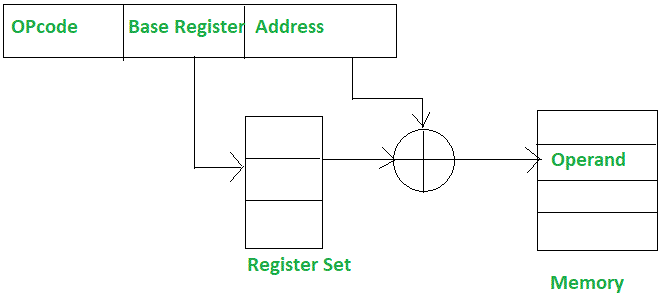先决条件–寻址模式
1. PC相对寻址方式:
PC相对寻址模式用于实现段内控制的传递,在这种模式下,有效地址是通过向PC增加位移来获得的。
EA = PC + Address field value
PC = PC + Relative value 
2.基址寄存器寻址模式:
基址寄存器寻址模式用于实现段间控制转移。在这种模式下,通过将基址寄存器值添加到地址字段值中来获得有效地址。
EA = Base register + Address field value
PC = Base register + Relative value 
PC相对寄存器和基址寄存器寻址模式之间的区别:
| PC Relative Addressing Mode | Base Register Addressing Mode | ||||
|---|---|---|---|---|---|
| The content of program counter is added to the addressing field of the instruction i to obtain the effective address. | The base register content is added to the addressing field of the instruction to obtain the effective address. | ||||
| The addressing field of the instruction is mostly a signed number which can be either positive or negative. | A base register holds a base address and the addressing field of the instruction gives displacement according to the base address. | ||||
| A program counter always keeps track of the instructions of the program stored in its memory. | A particular register has to be selected from the register set, according to the instruction. | ||||
| Uses more bits as it has to specify a memory address directly. | Uses less bits as it has to select a register from a register set. | ||||
| A program counter always contains the address of the immediately next instruction to be executed. After fetching the address mentioned in the instruction, the program counter value immediately increases. | In Base Register addressing mode the displacement value can be the same as the value required to reference the desired address as it does not immediately go to the next instruction. | Effective address of the operand is obtained by adding the program counter content to the addressing field of instruction. | Effective address of the operand is obtained by adding the base register content to the addressing field of instruction. | EA = PC + Address field value PC = PC + Relative value |
EA = Base register + Address field value PC = Base register + Relative value |